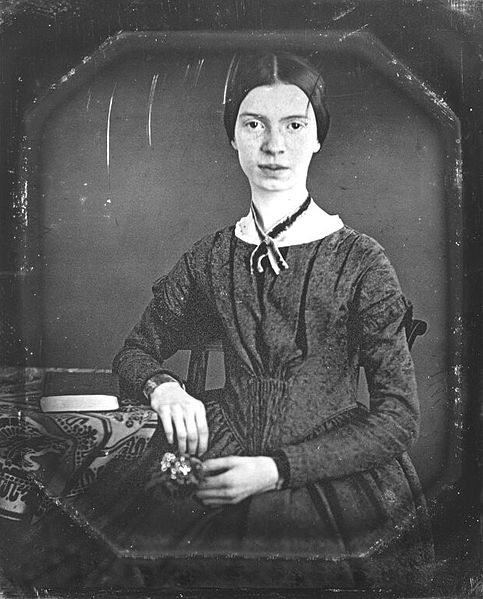Learning to Read Poetry Critically

How To Read Poetry Critically and Apply it To Your Life
I'll be one of the first to say it, poetry can be hard to understand, much less to be read critically. A lot of the time poetry poetry has a more subtle hidden layer of meaning to it that you might not understand the first time, or even the twentieth time reading.
Though I studied medieval poetry for quite a while, when I got to Dickenson and Whitman I found that poetry had changed a lot. Rather than telling somewhat straightforward stories, these were clearly saying something other than what the words meant - which meant a lot of work for me for the next half year of studying poetry.
The best way to learn is by example, so I will look at some Dickinson poems and say what I see through them - but this could be completely different from what you or other people see. A lot of the time poetry can have hidden meanings for you based on experience, or based on historical knowledge, or any random set of coincidences you have with the author.
Case Study: Emily Dickinson
To understand writing, you often have to understand the author.
Emily Dickinson (December 10, 1830 – May 15, 1886) was a very quiet person who felt herself an outcast. Most called her a hermit. In fact, only about 12 of her 1800 poems were published while she was alive, most of them were published from letters and scraps of paper after her death. Her themes often cover death and immortality, feeling alone, and pain. Many poetry classes are now treating Dickinson's poems as means to explore the healing power of poetry by exploring other people's pain and how they got over it. Poems published while she was alive were heavily altered to fit the standards of the day, probably one of the reasons she didn't publish and probably also the way she felt about her life in general - that it was altered to fit the standards of the day with how repressive society was towards females.
Much Madness
Translating Poetry Aka Critical Reading and Understanding
Almost 600 of Emily Dickinson's poems can be found here. This is a wonderful resource and I shall be using it for the poems. Most of her poems have no titles and are named the first line. Hearing it read aloud can also help, so I have attached a video with a clear reader.
MUCH madness is divinest sense
To a discerning eye;
Much sense the starkest madness.
’T is the majority
In this, as all, prevails. 5
Assent, and you are sane;
Demur,—you ’re straightway dangerous,
And handled with a chain.
First, we have to ask ourselves some questions about this. "What is she saying, literally?" "What could she be dealing with in life at this point and what could have made her written this?" "How is she feeling about this?" So: restate in your own words the poem, question why it was written and how she felt.
- Literally she is saying much madness is actually the truth, or the right way to do it when you look at it the right way. Unfortunately it is the majority that prevails (those who are not able to see the truth, or the right ways to do things.) If you agree with the majority, you are sane. If you disagree you are mad, dangerous, and locked away.
- Dickinson felt an outcast and did not belong with the people around town. Being corrected on things that did not really matter such as proper behavior, the way to write poetry, etc was probably quite frustrating for her so she was probably inspired by some sort of negative exchange and decided to vent about it in a poem.
Next, to really understand the poem we should come up with something from our own lives that would fit this.
- I am constantly telling my friends what I see their actions are going to lead to (bad relationships, bad money decisions, etc) and they sometimes get rather angry at me for stating what I feel will happen, yet be it days or months later I am proven right. My sense was deemed madness and because it was not with the majority, and I did not recant, I was "handled with a chain".
Now, I feel I completely understand the poem, what she is really saying, and how it could relate to my own life.
On Your Own
Here is another Dickinson poem. I will place the poem and you shall try to figure out its meaning and background on your own, and afterwards I will give some thoughts about the poem so you can see if we have the same conclusions.
I'm Nobody! Who are you?
Are you – Nobody – too?
Then there's a pair of us!
Don't tell! they'd advertise – you know!
How dreary – to be – Somebody!
How public – like a Frog –
To tell one's name – the livelong June –
To an admiring Bog!
So, work on it on your own, and then read what is below.
- In this poem, Dickinson is exploring her thoughts about how it is to be alone. Since she often wanted to be alone and only kept sending letters to a doctor and her sister she did not have many people she came in contact with (by her own choice). How dreary it would have to be to be required to announce yourself (and for people to know who you are.) She is probably thinking about those socialites who stove to keep their name afloat and in the air - constantly croaking like frogs at a bog. She clearly thinks that this is a waste of time and there are better things to do.
- I can think of many times I have just wanted to be left alone, that I had no telephone for people to call, or no address for them to come to. Its easy to see how she feels happy that she is a nobody when she generally dislikes being around people.
I hope you got something similar. Who knows, you could have come up with something completely different and it could be right or who knows, even better!








